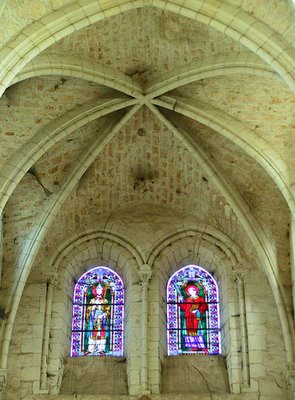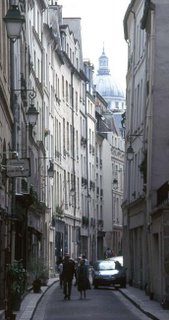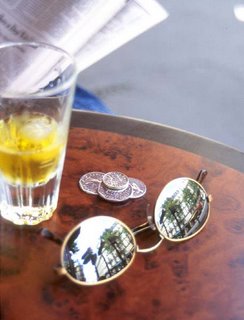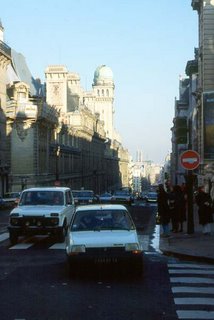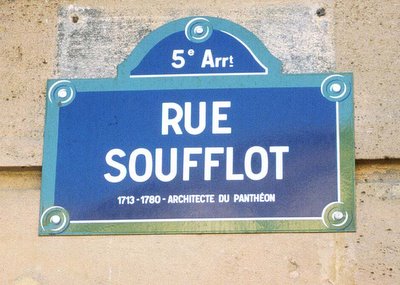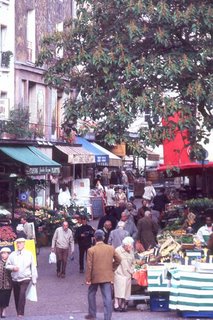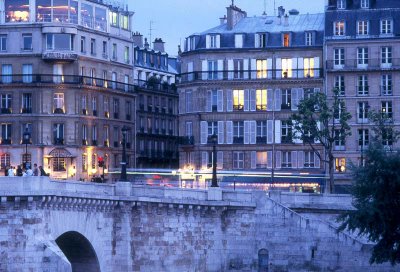We've been feeling a bit down lately, probably because of the short gray days and cold temperatures we've been experiencing this past month or so. We're not out outside much, except to walk the dog and go to the grocery store. I wrote what follows in 2004, during our first winter in France, and it kind of sums up the way we're feeling now. We know it's only temporary.January 20, 2004
Winter is a bit depressing right now. The weather has been cold, then warm, then cold again. It’s not that harsh bitter cold that makes your breath freeze on your mustache and makes you feel as though your nostrils are freezing shut every time you inhale. No, it’s just cold enough to make it uncomfortable to be outside. It snowed a little and it rains frequently. We feel house-bound.
The electric bill arrived, finally, after months of practically paying nothing due to the estimation-based billing process that EDF uses. The electric company reads the meter only twice a year. They estimated our monthly consumption based on the first bill when we hadn’t lived here very long and didn’t have any appliances. Then, at the end of December, the big bill hit based on the meter reading. It was over 350 euros. I was expecting it, thanks to the electricity-estimating spreadsheet I had built, and I’ve now signed up for self-meter reading via the internet. But still, our consumption of kilowatt hours was a bit higher than we’d like. Now, in the new year, we’re keeping lights off, not keeping the water heater on in the daytime, and trying not to run the washing machine, dryer, and dishwasher except on overnight cycles. Electricity is about half price between midnight and six in the morning and the appliances are equipped with delayed starting features. We run out of hot water sometimes in the afternoon. Our damp clothes are hanging in the utility room. I skip showers every other day to save hot water.
The heat is working well, but we’re using about 12 liters of fuel oil a day. We’ve also got the furnace on a timer, so the heat comes on at 7:30 am and goes off at 8:00 pm. Since neither one of us likes the heat on at night, that’s a good thing. We also have it go off for 2 hours mid-day. On cold days, those 2 hours are enough for the house to cool down significantly. The furnace keeps the water hot while it’s “off,” it’s just that the hot water doesn’t circulate to the radiators and cool down. This shortens the time that the furnace needs to burn. We have about 2 weeks of fuel left before we need to order another 1,000 liters.
On Saturday, I noticed that when I flushed the toilet, the water was taking a long time to drain out. Of course, this made me a bit suspicious. I checked the level in the holding tank, and naturally, it was full. This came as quite a surprise since it’s only been one month since it was emptied and we had been getting it emptied every two months. We’ve concluded that the heavy rains we had in the past week (a month’s worth of rain in one week, according to the weather channel) leaked into the tank and filled it up. For three days, while waiting through the weekend and then for the pumping company to fit us in, we have not had use of the toilet. We’ve been peeing outside and in the bidet, and have used a bucket and shovel (to dig burial holes) for the more serious waste issues.
The hard rains of the past week brought another revelation: the windows on the western side of the house leak. This is the only time they’ve leaked in six months (we had a hot, dry summer), but the wind-driven rain came right into the house through the window joints and spilled down the walls. We cleaned up and shut the shutters, which did the job of keeping the water out, but which also had the unpleasant effect of making the house feel even darker on dark, rainy days. The wood-framed windows are old and have warped. They need to be replaced. This is where I hear that cash register ringing sound in my head – KA-CHING! Actually, all of the windows in the house are single-paned and leak air, so replacing them over time is something that we’ve talked about doing. And the western windows are in the two bedrooms and the bathroom, they take the brunt of the weather, and it seems to make sense to change them first. So I suppose that’s what we’ll do.
News from the states is not all that uplifting. The dollar, while regaining some ground last week, has fallen against the euro to depressing levels, and the U.S. seems content to keep it that way. Europeans are starting to get nervous about the situation, but it’s not clear what, if anything, they can do. The current national political discourse does not bode well for reasoned thinking on social issues. A right-wing member of congress has introduced a bill to ban seven words from television (someone, please bring George Carlin back). An action-movie star as been installed as governor of California. San Francisco narrowly escaped a mayor who comes from so far left of center that he’s nearly on the right. Starbucks coffee is not content to be an international mega-corporation without expanding in to Paris. The U.S. looks like a culture out of control from the outside.
On the bright side… the days are starting to get longer, there are buds on the trees, and bulbs are coming up all over. Hunting season ends in a week or so; meaning no more gunshots out in the vineyards on Sundays. And, our good friend, Sue, will arrive in Spain next week and we’re starting the planning process for a trip down to see her, perhaps as early as the end of February.
Spring will be most welcome. I’m looking forward to opening up the house and letting the air flow through it. I’m looking forward to shorts and tee shirts. I’m looking forward to hearing the leaves on the trees rustle in the wind. I’m looking forward to digging in the garden and planting vegetables. I’m looking forward to light until nearly ten at night, and the bats feeding on insects at twilight. I’m looking forward to being able to sit outside at night and watch the stars.
*********************
PS. By the way, we did get the windows replaced and it made a great difference. We've also painted most of the rooms in the house and it feels much more like home that it did that first year. Still, the cabin fever sets in for about a month between mid January and mid February; and we had more snow this winter than in the last two - it even stayed on the ground for a while, accentuating that closed-in feeling. Still, we know spring is near now.
 About 45 kilometers from here, in the département of the Indre just south of Valençay, is the small town of Levroux. In the center of this unassuming place is a large church, called a collégiale, that is quite impressive. Construction on the collégiale began in the late 12th century, and parts of it were still being worked on at the end of the 15th century. To my eyes, the building looks mostly of the romanesque style, but its flying buttresses and interior ribbed vaults illustrate the ongoing transition to gothic style during this period.
About 45 kilometers from here, in the département of the Indre just south of Valençay, is the small town of Levroux. In the center of this unassuming place is a large church, called a collégiale, that is quite impressive. Construction on the collégiale began in the late 12th century, and parts of it were still being worked on at the end of the 15th century. To my eyes, the building looks mostly of the romanesque style, but its flying buttresses and interior ribbed vaults illustrate the ongoing transition to gothic style during this period.

 The sunny day made for an impressive show of stained glass inside the church. Not only were the windows brilliantly colorful, but the interior of the church was lit up, showing off details that we may not have seen on a cloudy day.
The sunny day made for an impressive show of stained glass inside the church. Not only were the windows brilliantly colorful, but the interior of the church was lit up, showing off details that we may not have seen on a cloudy day. Of course, what's a good church without a gargoyle or two? This guy looks menacing enough. I wonder what the poor fellow below him is thinking?
Of course, what's a good church without a gargoyle or two? This guy looks menacing enough. I wonder what the poor fellow below him is thinking?

